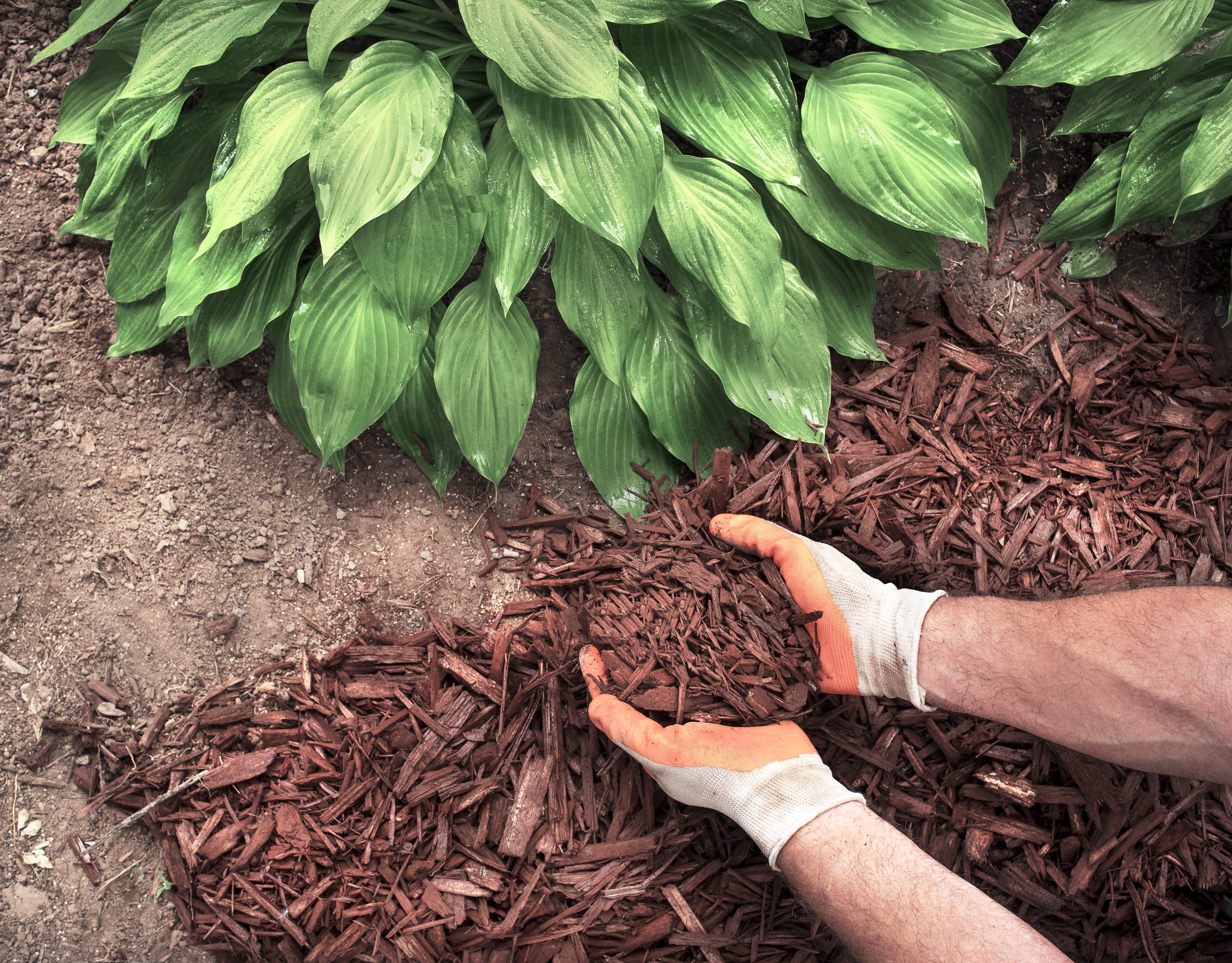If you’re planning a landscaping project anywhere in South East Queensland (or elsewhere in Australia for that matter), you’re going to need mulch. It slows down water evaporation, deters termites and other pests, suppresses weed growth and insulates the soil against the extreme conditions that prevail in our part of the globe.
Besides all that, mulch adds the finishing touches to a well-designed development and/or landscape.
In this article, we share eight essential tips to ensure you get the best possible results.
1. Choose the right mulch for your application
There are a wide variety of mulches, each with different properties and different purposes. These can be broadly divided into organic and inorganic mulches.
Inorganic mulches
Inorganic mulches include crusher dust, rock/recycled aggregates, recycled rubber granules, weed matting and geotextiles. With the exception of crusher dust, they are best used in areas where you are not planning to plant (such as walk ways, play and picnic areas, driveways and parking lots).
This is because, although they last longer than organic mulches, they are not as environmentally friendly and they do not enrich the soil as organic mulches do. Also, inorganic materials can get hot in warm climates and therefore do not have the cooling effects on soil that their organic counterparts have.
Organic mulches
Organic mulches are the landscaper’s secret weapon. These can be made from a wide variety of different organic materials, including wood chips, shredded wood, bark, leaves, pine or wheat straw, compost and grass clippings.
Unlike inorganic mulches, organic mulches break down over time, nourishing the soil and improving soil structure by infusing it with valuable minerals, nutrients and organic matter.
These mulches not only look great, but they also help to reduce watering requirements by allowing water to penetrate and slowing its evaporation from soil. So, plants have access to more water for longer periods.
Organic mulches insulate soil and protect it from extreme temperatures, helping plants to thrive. They reduce soil erosion and prevent soil compaction during downpours, keeping soil loose and aerated – just the way plants like it.
Your ideal mulch should:
- Decompose relatively slowly
- Allow water and air to permeate
- Be fire-resistant
- Not compact over time.
2. Avoid mulches that may contain weeds, seeds, pests and harmful chemicals
Your mulch should enhance your landscape. The last thing you want is for the mulch to introduce issues. That’s why it’s vital to use only a premium grade mulch that is clean and free from weeds, seeds, pests and chemicals.
3. Use the right amount of mulch
The thickness of your mulch layer makes a huge difference to the results you’ll get. Experts recommend mulching twice a year – this can be done at any time of the year.
A layer of about 8 cm is good for organic mulch in most garden beds. Use a little less when mulching around smaller herbaceous plants.
Thin your mulch out at the edges of beds, near pavements and stepping stones, and around tree trunks.
4. Maintain your mulch regularly
When applying new mulch to your beds, remove some (but not all) of the old mulch that has been around for a while.
5. Use mulch to combat soil erosion and sediment run off on bare soil
Mulches are excellent for slowing storm water run off and preventing soil erosion. Use them wherever you have a bare patch of soil on your site.
Choose inorganic mulches such as rock or recycled aggregates or crusher dust for areas where you don’t intend to plant. Use organic mulches around plants.
6. Be careful when mulching around trees/shrubs
It is often difficult to grow grass or ground cover in the areas beneath trees. Organic mulches provide an excellent alternative to these, ensuring that water penetrates into the ground and retaining it in the soil to provide nourishment to the tree.
Be careful not to pile mulch up high against the tree/shrub trunk as this can cause bark to decay, leaving the tree vulnerable to disease. The thick layer of mulch also smothers roots, which may even grow into the mulch, where they are more exposed and could become damaged or diseased.
Ideally, place a layer of about 8 cm around the trunk and spread it out to the furthest reaches of the branches (the drip line). Create a saucer around the base of the tree/shrub by raking the mulch away from the trunk until you can see the root flare. This will help direct water to the roots.
7. Don’t use plastic or landscape fabrics beneath mulches
People often use black plastic or weed matting beneath inorganic mulches to suppress weed growth. However, this could lead to excess water run-off causing erosion and ruining the clean, streamlined appearance of your landscape.
Organic mulch likewise does not benefit from having a layer of weed matting or plastic beneath it as this prevents nutrients and organic matter from the mulch from nourishing the soil.
In either case, the weed matting or plastic can prevent water from reaching the soil and weeds may even grow into the landscaping fabric.
What’s more, mulches tend to shift around on the smooth surface of these fabrics leading to unsightly patches where the weed matting or plastic are exposed.
8. Get creative with different types of mulches
With so many different types, colours, and textures to choose from, you’re free to be as creative as you like with your landscape design.
Use different mulches in different areas to create a pleasing overall effect and you’ll still be reaping all the incredible benefits that mulch has to offer.
Mulch reduces watering requirements, suppresses weed growth, nourish soil, deters pests and adds the finishing touches to your project.
Our takeaway
Mulch has many practical and aesthetic benefits and can be used in a variety of civil, commercial, residential and landscaping settings to reduce watering requirements, suppress weed growth, nourish soil, deter pests and add the finishing touches to your project.
It is vital, however, to select a premium quality mulch that will not introduce pests, chemicals and/or weeds into your landscape. Browse our range of clean, pest, chemical and weed free mulches to find one that’s right for you. Or discuss your needs with our friendly team today.
We supply & deliver quarry and landscaping materials to a host of leading brands including







